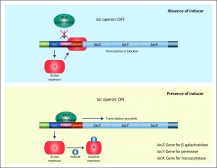Definition
noun
The first known DNA polymerase, encoded by polA gene, and is involved in DNA replication in prokaryotes
Supplement
DNA polymerases assist in the replication of DNA molecule by assembling the nucleotides in order to form new strand from the parent strand of DNA. The first DNA polymerase to be identified is DNA polymerase I or Pol I. It was discovered in 1956 by Arthur Kornberg, an American biochemist.1 He was able to characterize this enzyme initially in E. coli. In E. coli, the enzyme is comprised of 928 amino acids. Nevertheless, the enzyme does occur not just in E.coli but also in many prokaryotes. In prokaryotes, this enzyme is mostly encoded by polA gene.
DNA polymerase I is involved in a 5’3′ DNA-dependent DNA polymerase activity (i.e. requiring a 3′ primer site and a template strand) and in a 5’3′ RNA-dependent DNA polymerase activity. Apart from replicative activities, it is also involved in reparative processes, such as the 3’5′ exonuclease proofreading activity and the 5’3′ exonuclease activity for nick translation during DNA repair. Pol I adds approximately 15 to 20 nucleotides per second.
Also called:
- Pol I
See also:
Reference(s):
1 Lehman, I. R., Bessman, M. J., Simms, E. S., and Kornberg, A. (July 1958). “Enzymatic synthesis of deoxyribonucleic acid. I. Preparation of substrates and partial purification of an enzyme from Escherichia coli”. J. Biol. Chem. 233 (1): 163–70.




